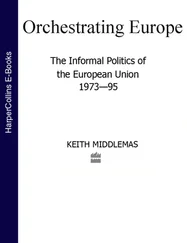Stanley’s compulsion to take up art bemused his musical father. *But typically Pa devoted his persistent energy – which Stanley inherited – to winning for his son the best possible training. It began in 1906 – 7 with lessons from Dorothy Bailey, a young local woman who had some leanings as an artist. 15This was followed by a year at Maidenhead Technical College, mainly drawing plaster casts. Then, initially under the financial patronage of Lady Boston, who had herself studied at the Slade, Stanley was accepted there. He travelled each day by train. For the first few days Pa escorted him. When Stanley felt confident to go by himself, he refused to diverge from the known route unless he were given detailed information beforehand. This unadventurousness was due not so much to timidity as to an innate characteristic which insisted, both in his everyday life and in his art, that he should always know exactly where he was, what he had to do and why, and to a reluctance to take guidance on trust.
To cosmopolitan London thinking, such precision was misinterpreted as parochialism. In the summer of 1911 Henry Tonks, the formidable drawing master at the Slade, decided that Stanley needed his experience of the world widened and arranged for him to stay with a farmer friend at Clayhiden, near Taunton. He might as profitably have sent Stanley to the moon. Sydney, the brother who perhaps most clearly understood Stanley, saw the pointlessness of the exercise: ‘I beseeched him by all the love he had for me not to go. But he went.’ 16
Stanley tolerated the event on an everyday level, but the drawings he managed were purely formal. The place meant nothing to him compared with Cookham and its associations. Tonks realized he had made a mistake and did not repeat the error. But in a letter to Florence, Stanley chanced to describe a farmworker he had seen there: ‘the old man that I drew, a labourer, was most pathetic. He had knocked off work owing to the heat and looked very ill. His face was beaten and cut with the sword of age. You could divide his face up like a [jigsaw] puzzle.’ 17Yet this vivid comment came from the ‘dunce’ who at the time could not for the life of him compose a business letter. The quality of Stanley’s mind is becoming apparent.
CHAPTER TWO
The Fairy on the Waterlily Leaf
All my drawings are self-portraits, and no amount of ‘abstract’ or what-not will conceal from that.
Stanley Spencer 1
AT THE SLADE, which Stanley attended from 1908 to 1912, his talents were quickly recognized. In 1909 he was awarded an endowed scholarship and became financially, if modestly, independent. ‘Our genius’ became the epithet half enviously, half affectionately given to the young Stanley by his fellow-students. It did not prevent some of them from ragging or playing practical jokes on him, which he tolerated good-humouredly, except when directed at his art and its integrity. His dedicated nature had little patience with the public-school-type humour prevalent among some of the well-heeled young bloods there. Goaded on one occasion beyond endurance, he silenced one tormentor by pouring white paint over his new suit. *
It was the custom for the students, girls included, to be known only by their surnames. Stanley became not Spencer, but ‘Cookham’. Among the star students of his years – Allinson, Gertler, Nevinson, Currie, Brett, Raverat, Japp, Carrington, Wadsworth, Roberts, Bömberg and Rosenberg – was Gwen Darwin, granddaughter of Charles Darwin, and reared in the academic atmosphere of Cambridge. Six years older than Stanley in age but perhaps a lifetime older in practical experience, Gwen took the young genius under her wing. He needed sympathetic guidance, a spiritual handholder.
The Slade students then were in the forefront of the Edwardian counterblast to Victorian materialism and sentimentality. It was an exciting age in which to be young. In contact at the Slade with lively young minds inevitably fascinated by the new modernism, Stanley encountered moments when his cautious and deliberate absorption of experience was misunderstood. His celebrated reply when asked at the Slade what he thought of Picasso – that he, Stanley, had ‘not got beyond Piero della Francesca’ – was considered supercilious. But Stanley did not mean to be patronizing. His mind was an instrument which sought connection, and the operation required time. Although he understood the aims of modernism and indeed shared its essential techniques, the fragmentation of its venturing repelled his instinct for totality. Starting from Pa’s advocacy of Ruskin and Tonks’ enthusiasm for early Renaissance painting, Stanley found in medieval art a serenity which matched his aspirations. Artists then, he argued, were integrated members of a stable culture. They were workmen – stone carvers in the Gothic north, mosaicists and fresco painters in the classical south – whose everyday talents were devoted to the beautifying of the churches, chapels, abbeys and great cathedrals which across Western Europe dedicated political power and economic wealth to the glory of the God who had accomplished them. Ruskin, in his opulent prose, set one such painter in his time:
Giotto, like all the great painters of the period, was merely a travelling decorator of walls, at so much a day, having at Florence a bottega or workshop for the production of small tempera pictures. There were no such things as ‘studios’ in those days. An artist’s ‘studies’ were over by the time he was eighteen; after that he was a lavatore , a ‘labourer’, a man who knew the business and produced certain works of known value for a known price, being troubled with no philosophical abstractions, shutting himself in no wise for the reception of inspiration; receiving indeed a good many as a matter of course, just as he received the sunbeams that came in at his window, the light which he worked by; – in either case without mouthing about it, or merely concerning himself as to the nature of it.
How exactly the sentiments matched Stanley’s! First written in the 1850s, they were published in reprint by George Allen in 1900 as Giotto and his Works at Padua. Gwen lent Stanley a copy. The glory of the subject was to remain evergreen throughout his life. The apprentice Stanley had no problem with his sunbeams; what he needed was the technique to manifest them. Although Stanley absorbed the excitements of the times, he rebuffed attempts at the Slade to recruit him to partisanship. The function of the place was simply to teach him to draw.
Academically, the Slade emphasized precision in line, a feature which reflected the forceful personality of Tonks. A surgeon by profession, he had long been fascinated by art and was delighted to be enticed into teaching by his friend Ernest Brown, the Slade Professor. A tingling of apprehension would herald his visits to the students working in the lofty hall of the men’s Life Class. The college organized a sketch club which held periodic competitions on set subjects, usually biblical. The entries, submitted anonymously, were judged by Tonks, and the prizes were welcome, especially to the poorer scholarship students. Unfortunately Stanley seldom won, *not because his draughtsmanship was inferior but because his compositions were judged not to illustrate the set theme effectively. Herein lies the first indication of a misunderstanding of the intention of Stanley’s art which was to dog him all his life, and which indeed persists in some respects to this day.
Most of Stanley’s early drawings – he had not yet seriously ventured into painting – are entries for these competitions. However, The Fairy on the Waterlily Leaf was drawn at the request of a Miss White of Bourne End to illustrate a fairy story she had written. 4She must have been surprised at the result. Stanley’s fairy is no elfin figure, but a substantial young lady impossibly posed on two waterlily leaves which in real life would instantly have sunk under her weight. But of course this is not real life, so Stanley portrays the prince who woos her as a Renaissance figure. He was copied from one of Stanley’s Slade life-class studies of a male model there called Edmunds.
Читать дальше









![Brian Thompson - A Monkey Among Crocodiles - The Life, Loves and Lawsuits of Mrs Georgina Weldon – a disastrous Victorian [Text only]](/books/704922/brian-thompson-a-monkey-among-crocodiles-the-life-thumb.webp)


